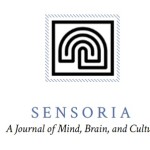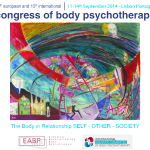
Lee, T. (2014). Trilogy of body imaginary: Dance/movement therapy for a psychiatric patient with depression. The Arts in Psychotherapy, 41, 400-408.
Reviewed by: Nevine Sultan, MA, LPC, NCC
Dance/Movement Therapy (DMT) developed in North America around the early 1950s as an interdisciplinary practice integrating the creative expression of the body with verbal communication within a psychotherapeutic context. Expressive body movement allows clients to access both their inner and outer worlds, enhancing clients’ sense of self-in-relation. At this time, much of the empirical literature addressing DMT is Eurocentric (based on Western concepts and values) given that many of the research studies conducted on DMT take place in the Western world.
This case study examined the application of DMT with a 56-year-old Taiwanese woman diagnosed with major depression with psychotic features. The client reported experiencing physical fatigue, chronic insomnia, weight loss, and a suicide attempt. At the commencement of treatment, the client exhibited flat affect, and a number of dissociative symptoms including vocal monotony, glazed eyes, and low engagement with her physical surroundings, even with her therapist (the researcher). The intervention consisted of three phases of treatment designed to (a) build the therapeutic relationship, (b) enhance the client’s body awareness and allow her to create her own verbal interpretations of her bodily experience, and (c) facilitate the client’s embodiment of her imagination, enabling her to make contact with her inner conflict and reveal the true nature of her trauma.
Treatment involved weekly DMT 60-minute sessions over the course of two years, with a one-month annual pause during Chinese New Year. Phase one included 16 sessions in which each session opened with three movements of dharma discipline: Shuai Shou Tong Mai (moving hands to unobstruct meridians); Ti Jiao Tong Mai (stretching legs to unobstruct meridians); and Tian Di Zhen Dong (shaking all of the body). As the therapist facilitated the client’s release of muscular tension, the client voiced her experience to the therapist, thus enhancing the therapeutic connection, and allowing the client to access her trauma and bring it into the process of therapy.
Phase two included 30 sessions predominantly using the Rumba, the client’s preferred style of dance. The therapist noted that the client’s use of ballroom dance, and her description of her inability to dance without being led by her teacher, indicated her preference to be a follower versus a leader, and allowed her to engage her sensuality and femininity to attract the opposite sex in her desire for love. However, the therapist used this phase of the treatment to encourage the client to direct the therapeutic process through her knowledge of ballroom dance. The client’s taking on a teaching role enabled her to experiment with being the leader. The therapist also urged the client to free walk in order to explore her unintegrated parts, release her body from the restrictions of ballroom dance, break habituated movement, and become more grounded and embodied.
Phase three included 22 sessions using the flying dance, in which the client embodied fairies, flying birds, and other characters from her imaginary world played out through spontaneous and highly energetic body movement. Stepping away from the consistency of ballroom dance and into a more improvisational form of body movement helped the client release the need to see herself through the lens of observers (both real and imagined) and to instead see herself through her solitary experience, and through her experience directing the therapist. The client’s ability to embody her imagination and act out her fantasies through spontaneous body movement supported the release of repetition and dissociation. The client was then able to express her feelings and thoughts in an instinctive and unrehearsed manner, which ultimately paved the way for a connection between the client’s soma and psyche.
One of the limitations of case study research in general is the restricted transferability and/or generalizability of the findings. However, this case study had a number of strengths, including the rich descriptions of each of the client’s and the therapist’s experience, and the utilization of a culturally sensitive intervention designed to suit the demographic considerations of the client and the geographic location of the treatment. This case study and its findings provide a platform for further qualitative research in DMT, especially within multicultural settings. As we strive to establish an evidence base for body psychotherapy, it is important that our research efforts and findings reflect the knowledge, theory, and clinical practice of our discipline in as comprehensive and universal a manner as possible.
 Nevine Sultan, MA, LPC, NCC
Nevine Sultan, MA, LPC, NCC
Nevine has a Master of Arts in Clinical Mental Health Counseling from St. Mary’s University, and is pursuing a Ph.D. in Counselor Education and Supervision with a concentration in Somatics. She lives and practices in San Antonio, TX, specializing in trauma, dissociative disorders, and grief. Nevine embraces an embodied phenomenological approach to counseling and psychotherapy, research, and teaching. She is especially passionate about the relationally shared experience between therapist and client, and the impact of the embodiment and somatic awareness of the therapist on empathic presence and therapeutic praxis.
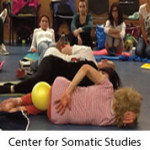












 Nevine Sultan, MA, LPC, NCC
Nevine Sultan, MA, LPC, NCC
 Rechtschaffen, D. (2014). The Way of Mindful Education. New York, NY: W.W. Norton & Company, Inc. 318 pages. IBSN:978-0-393-7-895-0
Rechtschaffen, D. (2014). The Way of Mindful Education. New York, NY: W.W. Norton & Company, Inc. 318 pages. IBSN:978-0-393-7-895-0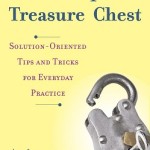
 Caby, A. & Caby, F. (2014). The therapist’s treasure chest: Solution-oriented tips and tricks for everyday practice. New York: W. W. Norton & Company. 345 pages. ISBN: 9780393708622
Caby, A. & Caby, F. (2014). The therapist’s treasure chest: Solution-oriented tips and tricks for everyday practice. New York: W. W. Norton & Company. 345 pages. ISBN: 9780393708622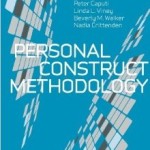
 Caputi, P., Viney, L., Walker, B., Crittenden, N. Personal Construct Methodology. Malaysia: Wiley-Blackwell. 348 pages. ISBN:9781119954163.
Caputi, P., Viney, L., Walker, B., Crittenden, N. Personal Construct Methodology. Malaysia: Wiley-Blackwell. 348 pages. ISBN:9781119954163.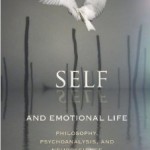
 Johnston, A. & Malabou, C. (2013). Self and Emotional Life: Philosophy, Psychoanalysis, and Neuroscience. New York, New York: Columbia University Press. 276 pages. ISBN: 9780231158312.
Johnston, A. & Malabou, C. (2013). Self and Emotional Life: Philosophy, Psychoanalysis, and Neuroscience. New York, New York: Columbia University Press. 276 pages. ISBN: 9780231158312.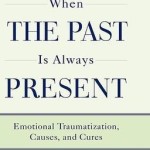
 Ruden, R.A. (2011) When the Past is Always Present. 132 New York, NY: Routledge. 132 pages. ISBN:978-0-415-87564-6
Ruden, R.A. (2011) When the Past is Always Present. 132 New York, NY: Routledge. 132 pages. ISBN:978-0-415-87564-6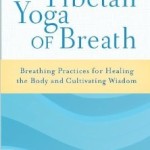
 Rinpoche, A. & Zangmo, A.C.(2013). The Tibetan Yoga of Breath.
Rinpoche, A. & Zangmo, A.C.(2013). The Tibetan Yoga of Breath.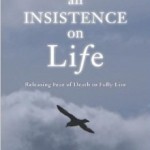
 Gignoux, J., 2013, An Insistence on life: Releasing fear of death to fully live, New York: FoulkeTale Publishing. 117 pages, 9781492745204
Gignoux, J., 2013, An Insistence on life: Releasing fear of death to fully live, New York: FoulkeTale Publishing. 117 pages, 9781492745204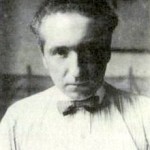
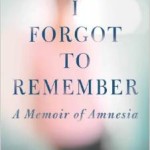
 Meck, Su & de Vise, Daniel. ( 2014) I Forgot to Remember: A Memoir of Amnesia. New York, NY: Simon & Schuster. 281 pages. ISBN: 9781451685817.
Meck, Su & de Vise, Daniel. ( 2014) I Forgot to Remember: A Memoir of Amnesia. New York, NY: Simon & Schuster. 281 pages. ISBN: 9781451685817.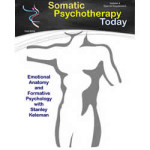
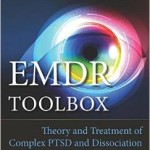
 Knipe, J. (2014). EMDR Toolbox: Theory and Treatment of Complex PTSD and Dissociation. New York, NY: Springer Publishing Company. ISBN: 9780826171269.
Knipe, J. (2014). EMDR Toolbox: Theory and Treatment of Complex PTSD and Dissociation. New York, NY: Springer Publishing Company. ISBN: 9780826171269.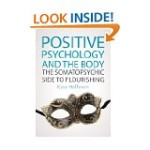
 Hefferon, Kate. (2013) Positive Psychology and The Body: The Somatopsychic Side to Flourishing. New York, NY: Open University Press. 254 pages. ISBN: 9780335247714.
Hefferon, Kate. (2013) Positive Psychology and The Body: The Somatopsychic Side to Flourishing. New York, NY: Open University Press. 254 pages. ISBN: 9780335247714.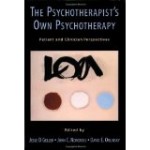
 Geller, J.D., Norcross, J.C., Orlinksy, D.E. (2005). The Psychotherapist’s Own Psychotherapy: Patient and Clinical Perspectives. New York, NY: Oxford University Press. 429 pages. ISBN:987-0-19-513394-3.
Geller, J.D., Norcross, J.C., Orlinksy, D.E. (2005). The Psychotherapist’s Own Psychotherapy: Patient and Clinical Perspectives. New York, NY: Oxford University Press. 429 pages. ISBN:987-0-19-513394-3.



 Kripalu is the largest yoga-based retreat center in North America. While you are here, enjoy daily yoga classes, natural-foods cuisine, massage and healing arts, hiking trails, sauna, like-minded people, and extraordinary views—all in the natural beauty of the Berkshires of western Massachusetts.
Kripalu is the largest yoga-based retreat center in North America. While you are here, enjoy daily yoga classes, natural-foods cuisine, massage and healing arts, hiking trails, sauna, like-minded people, and extraordinary views—all in the natural beauty of the Berkshires of western Massachusetts. 

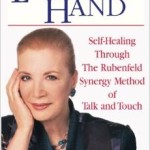

 This is to let you know about the new conversation in the “Somatic Perspectives on Psychotherapy” series. This month, it is with Pierre Morin, about health, sickness and Process Work.
This is to let you know about the new conversation in the “Somatic Perspectives on Psychotherapy” series. This month, it is with Pierre Morin, about health, sickness and Process Work.